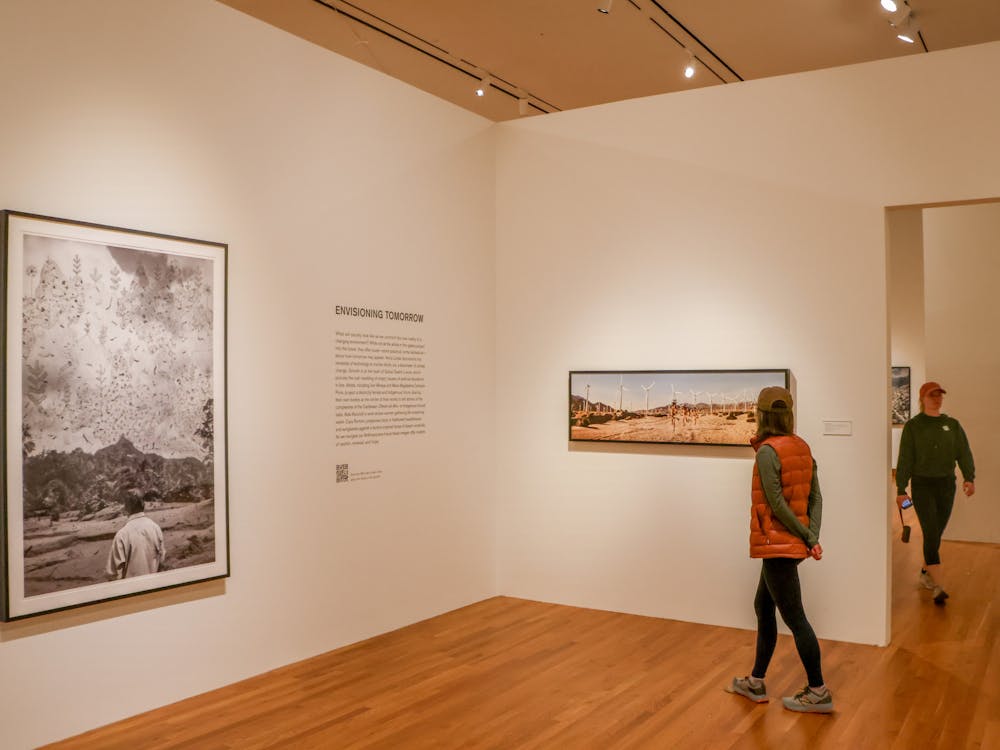The term "Anthropocene," coined in the 1980s by biologist Eugene Stormer, refers to our current geological epoch: a period singularly defined by the dominant influence of human activity on climate and the environment. The term has gained widespread traction across various fields, entering public discourse through environmental science, journalism, activism and artistic expression.
“Second Nature: Photography in the Age of the Anthropocene,” an exhibit featured at the Nasher Museum of Art from Aug. 29, 2024 to Jan. 5, 2025, offers a visual journey through contemporary photography that captures the complexities and challenges of this new age.
Curated by Marshall N. Price, Chief Curator and Nancy A. Nasher and David J. Haemisegger Curator of Modern and Contemporary Art, and Jessica May,“Second Nature: Photography in the Age of the Anthropocene” features the works of 45 photography-based artists from around the world.
The exhibit showcases a diverse range of artistic methods that illustrate the Anthropocene and its nuances, speaking to urgent issues such as climate change, colonialism and socio-environmental trauma. Aerial photographs reveal the stark contrast between beauty and toxicity in landscapes altered by human influence; collages make use of juxtaposed archival images to confront colonial narratives and highlight the growth of urbanism on an unprecedented scale.

Organized around four thematic sections — “Reconfiguring Nature,” “Toxic Sublime,” “Inhumane Geographies” and “Envisioning Tomorrow” — the exhibition aims to represent how the multifaceted web of relationships between humanity, industry and the natural world might ultimately influence a number of potentially-precarious futures for our planet and its inhabitants
Many of the works featured in the exhibition use innovative techniques and unique variations on artistic forms to provide new and exciting perspectives on our changing climate. “Vatnajökull YCM1,” a heated chromogenic print by Los Angeles-based artist Matthew Brandt, takes digital images of icebergs around Iceland’s Vatna Glacier, manipulates them through fire and heat, then separates and rejoins the prints’ individual color layers to create an abstract, profoundly altered object. Moscow-based artist Danila Tkachenko’s “Acid” series of inkjet prints depict hidden radioactive fallout, provided by cleverly used filters in restricted areas of Russia and other former Soviet States. Belgian artist Sanne De Wilde’s “Island of the Colorblind” print series uniquely captures how the Pingelap Atoll’s largely-colorblind community sees the effects of climate change upon their environment.
Others use common forms in unique ways to explore marginalized lived experiences of our changing climate and advocate for awareness and action. The works of Joiri Minaya, Maria Magdalena Campos-Pons and Aïda Muluneh present Afrofuturist and Indigenous-futurist visions of a future that embodies climate resilience and sustainability. João Castilho’s gritty mineral pigment print “Morro Vermelho” interrogates the entropic contradictions between traditional Brazilian culture and the transformation of its ecosystem through capitalism. Sammy Baloji, Leonard Pongo and Adrián Balesca explore the history of colonial resource extraction through a number of diverse mediums.
Accompanying the exhibition is a fully illustrated, 224-page catalogue, published by Rizzoli Electa and featuring 11 essays that explore different topics related to the complicated relationship between art and the Anthropocene. In her review of the exhibition catalogue, acclaimed environmental journalist Tatiana Schlossberg remarks that “this book (...) offers a sweeping exploration of the vast and mismatched time scales of photography, climate change and ‘deep time’ of geologic history. Looking is hard; not looking will end up being harder.”
“Second Nature: Photography in the Age of the Anthropocene” is a fascinating exploration of the interdisciplinary connections between art and environmental science, one which invites audiences into head-on confrontation with the frank realities of our changing world. As we navigate the complexities of the Anthropocene, “Second Nature” serves as a reminder of the power of art to inspire dialogue and action in the face of urgent environmental challenges.
Get The Chronicle straight to your inbox
Sign up for our weekly newsletter. Cancel at any time.
Jules Kourelakos is a Trinity senior and a managing editor of The Chronicle's 120th volume. She was previously Recess editor for Volume 119.

